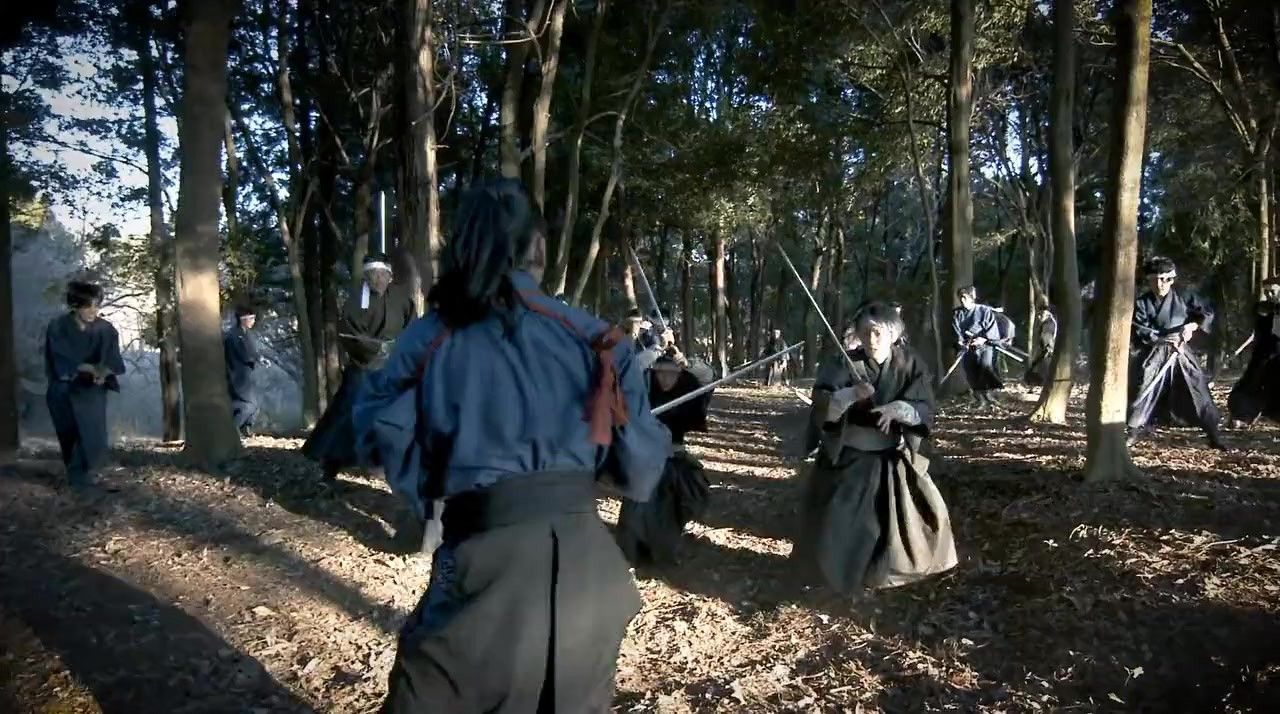Crazy Samurai Musashi (Shimomura Yûji, 2020)

Legendary samurai Miyamoto Musashi has defeated the champion of the Yoshioka clan in a duel. In retaliation, the clan gathers 100 samurai and 300 mercenaries to ambush him and exact their revenge. But then things go terribly, terribly wrong as that crazy samurai kills them all, one after another in a 75 minute handheld sequence shot. Crazy Samurai Musashi is an experimental action film more admirable for its tenacity and the stamina of its star, Sakaguchi Tak, than its choreographic pyrotechnics. Tak only has a handful of moves, and he uses them again and again, such that even the coolest (my favorite being a head fake followed by slapping his opponents sword and then a little leap to bonk them on the top of their head) lose their charm after awhile, leaving only the exhausting monotony of senseless violence. Call it “Sword of Bore-doom.”
This is, of course, the point. Just as the, for its time, hyperbolic finale of Okamoto Kihachi’s 1966 classic The Sword of Doom was the endless, pointless destruction wrought by the samurai mindset, part of an on-going revision of the jidai-geki genre in reaction to the disastrous perversion of samurai ideology by Japan’s early 20th century military dictatorship. In that film, however, Nakadai Tatsuya’s anti-hero is clearly marked as an outsider, refusing to be bound by the norms of samurai culture, becoming a murderous killing machine because he can and/or because his fractured understanding of samurai logic inevitably leads him there. I don’t know if George Lucas saw it, but it’s hard to believe he didn’t as Nakadai is essentially a Sith to the other samurais’ Jedi. Regardless, it’s not the samurai who are crazy, it’s Nakadai. Crazy Samurai Musashi, on the other hand, strikes at the very ideal of the samurai class.
Miyamoto Musashi was a philosopher and a painter, a poet-warrior in the classic sense. But none of his devout Buddhism or even much of his innovative dual-wielding sword technique are on display here. Instead he is a relentless killing machine, interested only, he says, in winning. Tak, a former street fighter turned action star of films like Versus, Death Trance, and Re: Born, plays him with a sly sense of humor — at times he seems as confused by his opponents’ strategy and seemingly unending numbers, as we do. But there’s no hint of the spiritual or the artistic in his performance, outside of his obvious athleticism (and even that is marked more by extreme endurance rather than acrobatics). Tak and his director, Shimomura Yûji, strip the great sword saint Musashi to his essence: killing lots and lots of people.
But even that simple point is undermined by the experimental conceit of the film. We spend most of the movie marveling at its construction and noticing its idiosyncratic flaws: the handheld camerawork, the repetitive movements, the opponents who just run back and forth in the background rather than all attacking Musashi at once. The experiment emphasizes the theatricality, the phoniness of the spectacle. Any thought of what being a samurai really means, about what it means to struggle with honor against a sea of NPC foes dissipates like the CGI blood that spurts out of the extras’ bodies and immediately vanishes. All that’s really real in the end is the audience’s admiration for a very tired actor and camera operator.
